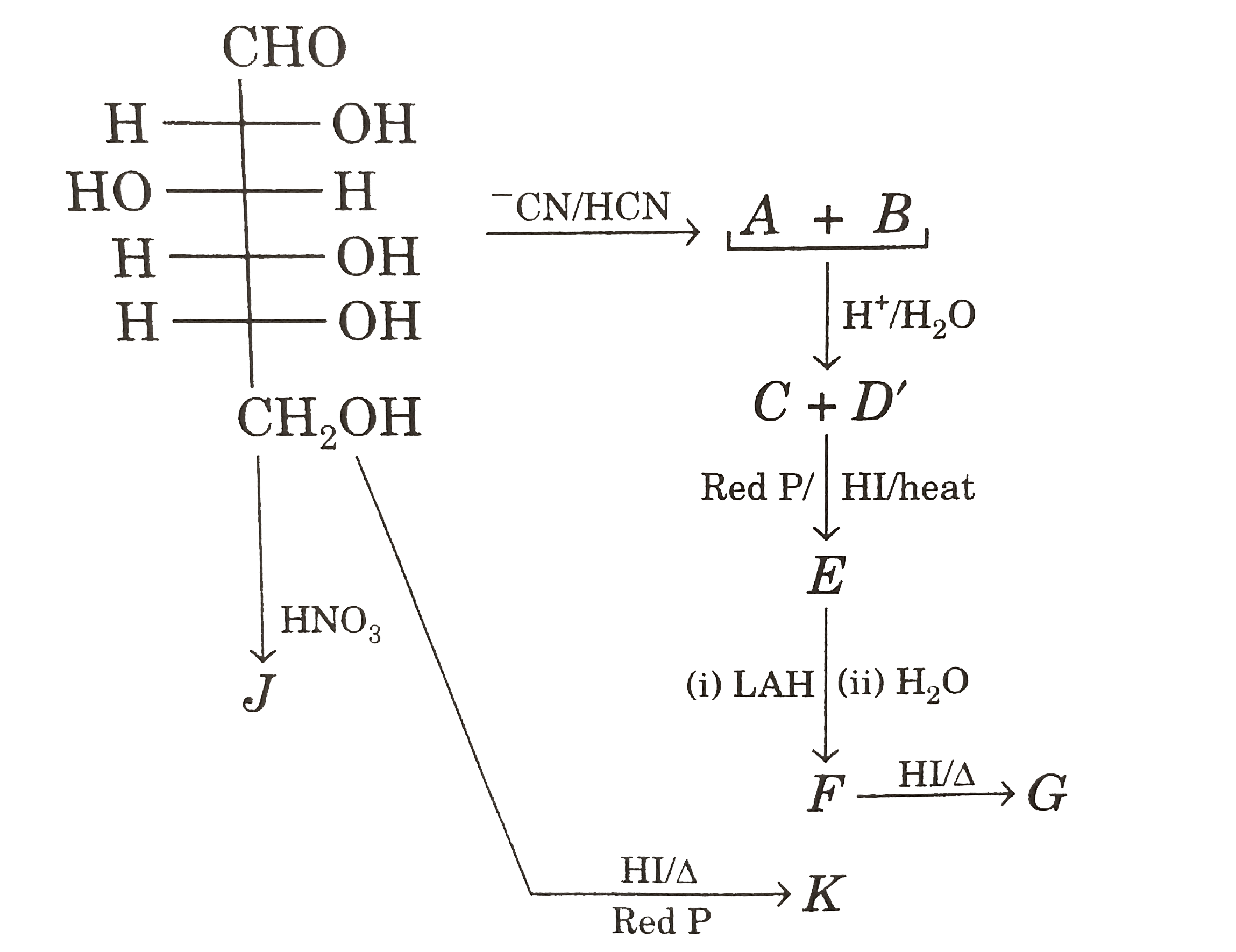
What is relation between G and K?
A
Chain isomer
B
positional isomer
C
Homologue
D
None of these
Text Solution
The correct Answer is:c
|
Topper's Solved these Questions
- BIOMOLECULES, POLYMERS, PRACTICAL ORGANIC CHEMISTRY AND CHEMISTRY IN DAILY LIFEBOOK - GRB PUBLICATIONCHAPTER - BIOMOLECULES, POLYMERS, PRACTICAL ORGANIC CHEMISTRY AND CHEMISTRY IN DAILY LIFEEXERCISE - MATCH THE COLUMN TYPE
27 Videos
- BIOMOLECULES, POLYMERS, PRACTICAL ORGANIC CHEMISTRY AND CHEMISTRY IN DAILY LIFEBOOK - GRB PUBLICATIONCHAPTER - BIOMOLECULES, POLYMERS, PRACTICAL ORGANIC CHEMISTRY AND CHEMISTRY IN DAILY LIFEEXERCISE - SUBJECTIVE TYPE
40 Videos
- BIOMOLECULES, POLYMERS, PRACTICAL ORGANIC CHEMISTRY AND CHEMISTRY IN DAILY LIFEBOOK - GRB PUBLICATIONCHAPTER - BIOMOLECULES, POLYMERS, PRACTICAL ORGANIC CHEMISTRY AND CHEMISTRY IN DAILY LIFEEXERCISE - MULTIPLE OBJECTIVE TYPE
72 Videos
- ALCOHOLS AND ETHERSBOOK - GRB PUBLICATIONCHAPTER - ALCOHOLS AND ETHERSEXERCISE - level 62
1 Videos
- CARBOXYLIC ACID AND DERIVATIVES, AMINES AND OTHER NITROGEN COMPOUNDSBOOK - GRB PUBLICATIONCHAPTER - CARBOXYLIC ACID AND DERIVATIVES, AMINES AND OTHER NITROGEN COMPOUNDSEXERCISE - Subjective type
19 Videos
Similar Questions
Knowledge Check
K is brother of X, Z is son of X. P who is daughter of K is married to N. G and X are sisters to each other. What is the relation between G and Z ?
Aa. sisterBb. AuntCc. MotherDd. Mother-in-lawWhat is the relation between KpandKc for a general reaction,
aA+bB⇔cC+dD?AKp=Kc(RT)ΔnBKc=Kp(RT)ΔnCKp=1Kc(RT)ΔnDKc=1Kp(RT)ΔnConsider the following equilibrium:
SO2(g)+12O2(g)K1⇐⇒SO3(g),
2SO3(g)K2⇐⇒
What is the relation between K1 and K2?AK1=1K2BK1=1√K2CK1=K2DK1=1K22
Consider the following equilibrium:
SO2(g)+12O2(g)K1⇐⇒SO3(g),
2SO3(g)K2⇐⇒ 2SO2(g)+O2(g)
What is the relation between K1 and K2?
View SolutionWhat is the relation between Ka and pKa value of carboxylic acid ?
View SolutionWhat is the relation between the C.G.S. and the S.I. unit of area?
View SolutionConsider the following reversible chemical reactions :
A2(g)+B2(g)K1⇐⇒2AB(g)....(1)
6AB(g)K2⇐⇒3A2(g)+3B2(g).....(2)
The relation between K1 and K2 is :
View SolutionSelect the correct expression regarding the relation between KP and KC for the reaction
aX(g)+bY(g)⇔bZ(g)+aW(g)−
View Solution
